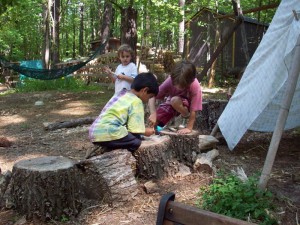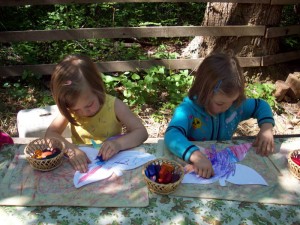I wrote this in a summer journal as I watched the children modeling natural clay, with total absorption, at the stream bank:
“I see their hands move lively and quick. Unconsciously they live the gift of an opposable thumb. Today I am thinking of our ancestors, all the way back to the cave, and the central place of the hand. In every culture, until perhaps the last forty years, hand-education has been an integral part of growing up. Hands were taught to carve stone arrowheads, to weave baskets, to mold clay pots, to hunt, to cure, to cook, to spin and weave, to sow and harvest. What are hands taught in the twenty-first century? At what expense do their hands lie limp in their laps? As their hands languish unused, so follow their minds. How can we measure the impact of a well-coordinated, steady, finely-tuned hand? What riches does this hand bring into their life? What do these well-trained hands have to offer the world?”
In his book The Hand: How It Shapes the Brain, Language, and Culture, neurologist Frank Wilson shows us the pivotal place of the human hand, equipped with our amazing thumb, in the evolution of the species. He argues passionately for the education of the hand, assuring us that people who use their hands, woodworkers, artists and plumbers alike, have a way of knowing the world that is inaccessible to those who have less hand training. We know that the density of nerve endings in our fingertips is enormous, and when these are engaged in childhood, the brain is enriched beyond measure. Through artistic expression, through free creative play, through engagement with the natural world the hand, and therefore the mind, is introduced to its own astonishing creative potential.


